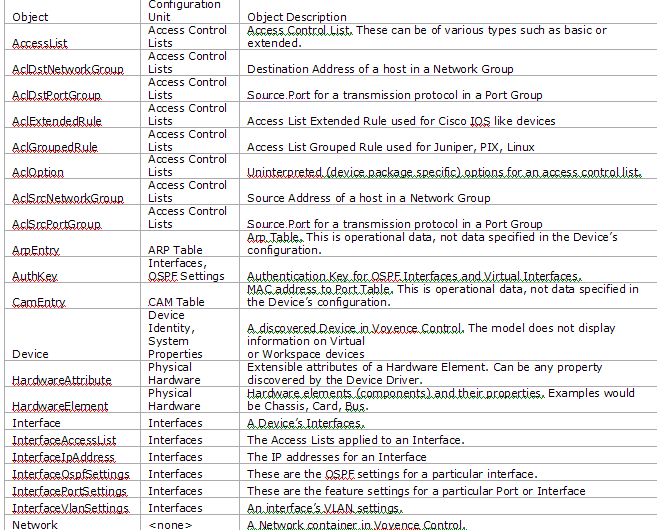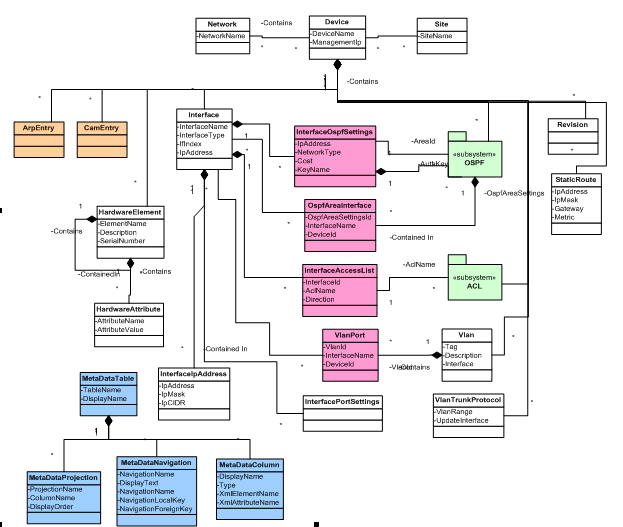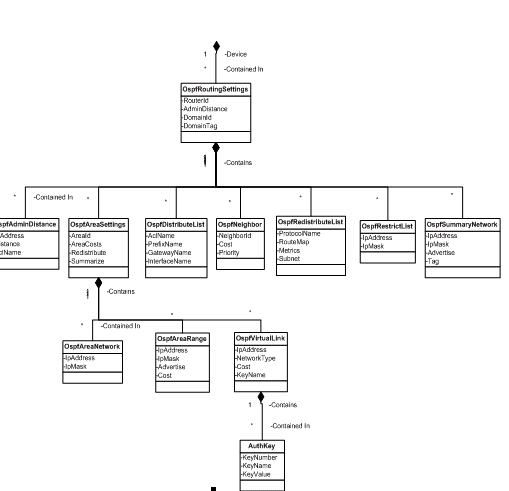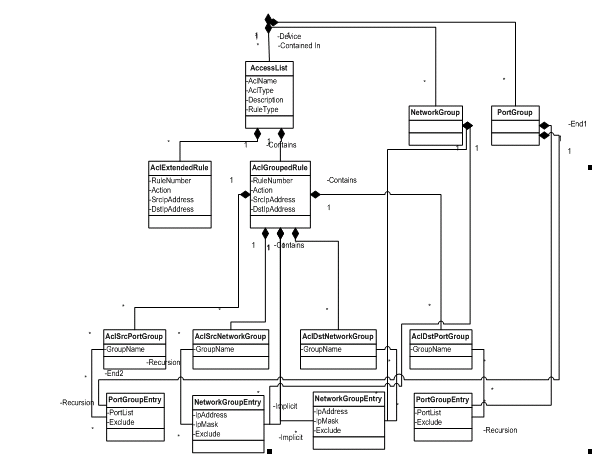The Object types currently supported are shown in the following table, along with the Configuration Unit they are derived from, and a description of the Object .
Details of each Object Type, and its Attributes is provided in the following sections.



The different Object types have hierarchical relationships, which are also described in the Metadata. For example, a Network contains Devices, which in turn contains Interfaces, each of which, in turn, may have one ore more Interface IP Addresses associated with it. A pictorial relationship of the Object types is depicted in the UML drawings below.
In the Model UML diagrams, boxes represent Object classes , and lines represent relationships between classes . The existence of a line extending between two boxes on the diagram (usually) implies there will be one or more relationships (referred to as Navigations) defined between the two Object classes. As an example, there is a Navigation from Device to AccessList, and from AccessList to AclExtendedRule or AclGroupedRule.
Device properties, Interfaces, Hardware, Arp entries, CAM entries.

The OSPF sub-system

The Access List (ACL) Subsystem

See: Model Object Types